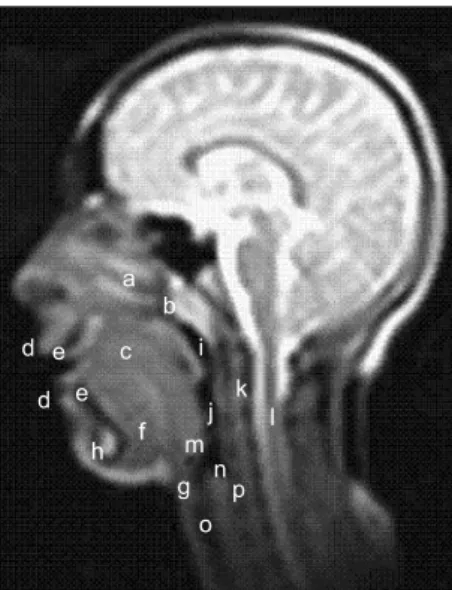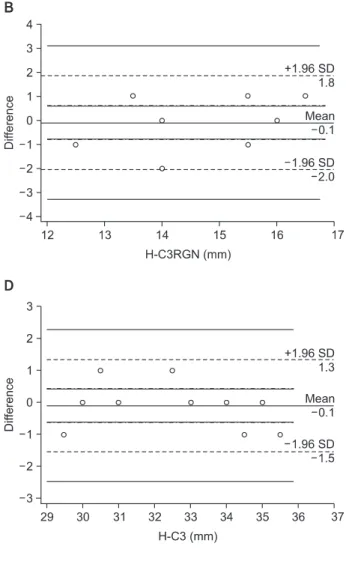Evaluation of hyoid bone movements in subjects with open bite: a study with real-time balanced turbo field echo cine-magnetic resonance imaging
Objective: To assess the position and movements of the hyoid bone during deglutition in patients with open bite. Methods: Thirty-six subjects were divided into 2 groups according to the presence of anterior open bite. The open bite group (OBG) and control group each comprised 18 patients with a mean overbite of –4.9
± 1.9 mm and 1.9 ± 0.7 mm. The position of the hyoid bone during the 4 stages of deglutition was evaluated by measuring vertical and horizontal movement of the bone. Results: Interactions of group and stage showed no significant effect on the measurements (p > 0.05). However, when group and stage were evaluated individually, they showed significant effects on the measurements (p < 0.001). In OBG, the hyoid bone was more inferiorly and posteriorly positioned, and this position continued during the deglutition stages. Conclusions: The hyoid bone reaches the maximum anterior position at the oral stage and maximum superior position at the pharyngeal stage during deglutition. Open bite does not change the displacement pattern of the bone during deglutition. The hyoid bone is positioned more inferiorly and posteriorly in patients with open bite because of released tension on the suprahyoid muscles.
[Korean J Orthod 2012;42(6):318-328]
Key words: Magnectic resonance imaging, Dentofacial anomalies Seniz Karacay
aSila Gokce
bErsin Yildirim
aa
Section of Orthodontics, Gulhane Military Medical Academy, Haydarpasha Education Hospital, Istanbul, Turkey
b
Department of Orthodontics, Gulhane Military Medical Academy, Ankara, Turkey
Received March 19, 2012; Revised August 30, 2012; Accepted September 7, 2012.
Corresponding author: Seniz Karacay.
Associate Professor, Section of Orthodontics, Gulhane Military Medical Academy, Haydar pasha Education Hospital, Tibbiye Cad., GATA Haydarpaşa Eğt. Hast., Diş Servisi, Uskudar-Istanbul, Istanbul, Turkey.
Tel +90 536 496 72 56 e-mail kseniz@yahoo.com
© 2012 The Korean Association of Orthodontists.
The authors report no commercial, proprietary, or financial interest in the products or companies described in this article.
This is an Open Access article distributed under the terms of the Creative Commons Attribution Non-Commercial License (http://creativecommons.org/licenses/by-nc/3.0) which permits unrestricted non-commercial use, distribution, and reproduction in any medium, provided the original work is properly cited.




